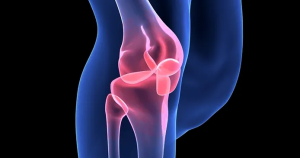 Losing weight can reduce knee pain and improve the kinematic function of the knee. It is estimated that nearly one-third of adults with obesity have arthritis. Patients with obesity are at an increased risk of developing knee osteoarthritis because of the increased load placed on their knee joints. For example, a common estimate is that for every one pound of body weight, your knees experience the force of three pounds of pressure each time you take a step. This means that losing just 10 pounds will yield a 30-pound decrease in pressure on your knees for each step taken. For patients with obesity, an elevated joint load can lead to knee osteoarthritis, which is accompanied by gait alterations and can further affect pain.
Losing weight can reduce knee pain and improve the kinematic function of the knee. It is estimated that nearly one-third of adults with obesity have arthritis. Patients with obesity are at an increased risk of developing knee osteoarthritis because of the increased load placed on their knee joints. For example, a common estimate is that for every one pound of body weight, your knees experience the force of three pounds of pressure each time you take a step. This means that losing just 10 pounds will yield a 30-pound decrease in pressure on your knees for each step taken. For patients with obesity, an elevated joint load can lead to knee osteoarthritis, which is accompanied by gait alterations and can further affect pain.
The discomfort associated with knee osteoarthritis can interfere with daily mobility, making it more challenging for patients with obesity to supplement weight loss efforts with physical activity such as walking. The Arthritis Foundation and the American College of Rheumatology consider walking to be a safe and effective form of exercise to promote weight loss for patients with obesity. To preserve quality of life and facilitate weight loss, it is important for patients with obesity to lose weight before knee pain caused by osteoarthritis restricts physical activity and gait alterations cause additional pain.
Knee Osteoarthritis, Weight and Gait
A 2019 study investigated weight loss on knee joint kinematics in a participants aged 25 – 60 with a BMI ≥ 35 and self-reported stiffness, knee pain, or aching in their knees for the previous 30 days. Those with diagnosed rheumatoid arthritis, previous or upcoming knee surgeries were excluded. Participants had either bariatric surgery or prescribed dietary medications such as phentermine, lorcaserin and a total daily energy intake of 1200 – 1500 k/cal and 1500 – 1800 k/cal for women and men respectively. They followed a high protein/low fat diet with meal replacements and were instructed to walk twice per week for at least 30 minutes.
Knee pain was evaluated using a self-report visual analog scale (VAS; 0 – 100) and a 3-Tesla MRI. The MRI images were segmented, and participant-specific 3D models were built. A fluoroscopic imaging system captured knee motion while participants walked on a treadmill at 1.5mph. Knee kinematics such as flexion-extension, adduction-abduction, internal-external rotation, anterior-posterior translation, medial-lateral translation, and superior-inferior translation were calculated.
Results suggest that knee pain was less at the one-year follow up and that the amount of weight loss was associated with an increase in the range of motion in flexion-extension and a decrease in adduction-abduction excursion. The authors note that the weight loss percentage was associated with reduced VAS self-report pain though the change in pain was not associated with kinematics. Overall, the results are promising and suggest that weight loss can modify knee kinematics, with greater weight loss being associated with greater kinematic change.
Losing Weight Reduces the Load on Knee Joints
For patients with obesity, losing weight reduces the load on their knee joints while improving their kinematic function. Because physical activity, especially walking, is a key component to maintaining a healthy weight and living an active lifestyle, health care providers should work with their patients to develop a weight loss strategy that meets their needs. To jumpstart weight, with the goal of helping patients become more active, a Low-Calorie Diet (LCD) or Very Low-Calorie Diet (VLCD) that is tailored to the specific needs of patients with obesity should be considered. When the pain and discomfort from knee osteoarthritis is reduced, patients can begin introducing new forms of low-impact activities into their weight loss program. Weight loss is effective in decreasing joint pain as well as improving kinematic function in patients with obesity and knee osteoarthritis.
— By Dawn M. Sweet, Ph.D

